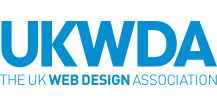Pay Per Click Advertising for Businesses
Pay Per Click Advertising is a form of Search Engine Marketing (SEM).
Whereas SEO is the process of ranking your site in Search Engines organically, Pay Per Click advertising involves paying to be in, or at the top of search results. Advertisers pay a fee each time one of their ads is clicked.
The Main Pay Per Cick Advertising Platforms for Business
Whilst there are a whole host of digital advertising platforms, we consider that only three or four are with advertising with. Why? because we have a track record of success with them, and because we know they work. They generate leads for our clients, and those leads convert into clients and customers.

Meta


The Benefits of PPC (Pay Per Click) Advertising
Some of the benefits of PPC advertising include:
- Targeted reach: PPC advertising allows you to target specific audiences based on factors such as keywords, location, and demographics. This means that your ads will be more likely to be seen by people who will be interested in your business, locally.
- Immediate results: With PPC advertising, your ads can be live within minutes of setting up your campaign. This means you can start seeing results quickly.
- Cost-effective: PPC advertising is a cost-effective form of advertising for your business. You only pay when someone clicks on your ad, so there is no cost for ad impressions that don’t result in clicks.
- Measurable: PPC advertising provides detailed analytics on ad performance, such as click-through rate, conversion rate, and cost-per-conversion. This data can be used to optimize ad campaigns and improve Return on Investment (ROI).
- Flexibility: PPC advertising campaigns can be easily paused, modified, or stopped at any time, giving you the flexibility to adjust your advertising strategy as needed. If you have enough leads or customers for a period, you may wish to pause your campaigns or concentrate on brand awareness. If your customer pipeline is looking a little empty, then you may wish to increase your spend.
- Increased brand awareness: PPC advertising helps increase brand awareness through repetitive exposure.
Pay Per Click advertising for businesses of all sizes makes a ton of sense as:
- You are in complete control of your advertising spend. You can spend as much or as little as you wish.
- They can achieve more or less instant results.
- You can target precisely the audience that may be interested in your facility – geographically or demographically, or both.
- You can test your ads, increasing ad spend once you have a formula that works.
- They are immune to changes in search engine algorithms.
How do PPC Ads Work
We have all seen the “sponsored” listings at the top of the search results when we Google something, and we’ve all seen ads pop up on Facebook when we have been searching for something on Google.
With pay-per-click advertising, you design your advertising campaign to be triggered by the same keywords that you would use to write your content, and to get found naturally. However, you are paying to be displayed near the top of the search in Sponsored Listings. Through very advanced targeting options, you can also ensure that your target is only shown to people in your target geographic location, and who meet certain criteria that you have specified. For instance, you may target:
- Women between 24 and 44 in (Postcode)
- Men in Manchester
- 18-22 Year Olds (at college/university)
- Men interested in gardening.
- Individuals- Life Event (getting married, buying a home, having a baby)
And most importantly, all of these can only be shown to people who live within (say) 4 miles of a certain postcode (or any other geographic criteria).
These are the very basics. Ads can be laser-targeted to be shown only to people with specific interests, who visit certain websites, who are similar to existing clients. The options are almost endless.
The two platforms that we recommend are Google and Meta (Facebook and Instagram). Find out more below.
The Differences Between Facebook Ads and Google Ads
Google Ads and Facebook Ads are both online advertising platforms that allow businesses to create and display ads to target audiences. However, there are some key differences between the two platforms:
- Audience reach: Google Ads primarily targets users who are actively searching for information or products using keywords, while Facebook Ads targets users based on their interests and demographics, such as age, location, and interests.
- Ad formats: Google Ads mainly offers search ads and display ads, while Facebook Ads offers a wide variety of ad formats, including image, video, carousel, and story ads.
- Placement: Google Ads primarily places ads on the search engine results pages (SERPs) and across its network of partner websites, while Facebook Ads places ads on its own platform, as well as on Instagram and other apps that it owns.
- Targeting options: Google Ads allows businesses to target users based on keywords, location, and other factors, while Facebook Ads offers a wide range of targeting options, such as demographics, interests, behaviors, and custom audiences.
- Pricing model: Both Google Ads and Facebook Ads use a pay-per-click (PPC) pricing model, but Google Ads also allows businesses to bid on keywords to determine the position of their ad, while Facebook Ads uses an auction-based system to determine ad placement.
- Analytics and reporting: Both platforms provide detailed analytics and reporting on ad performance, including clicks, impressions, and conversion rate, but Facebook Ads also offers features such as retargeting, and split testing.
In summary, Google Ads is mainly used to reach users who are actively searching for information or products, while Facebook Ads is used to reach users based on their interests and demographics. While both platforms are effective in their own ways, the choice of which platform to use depends on the business’s goals and targeting criteria.


